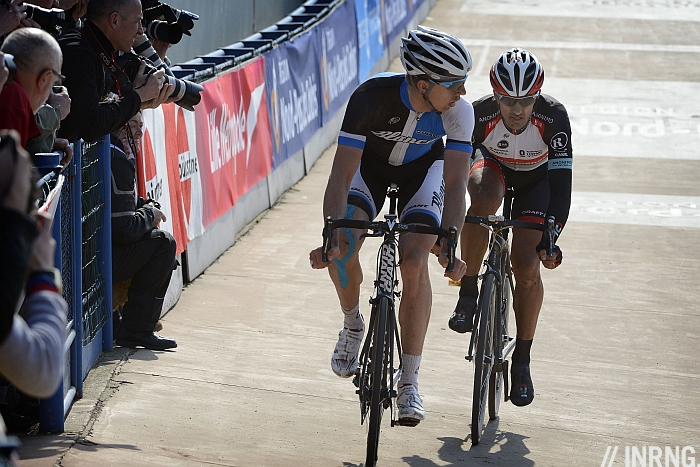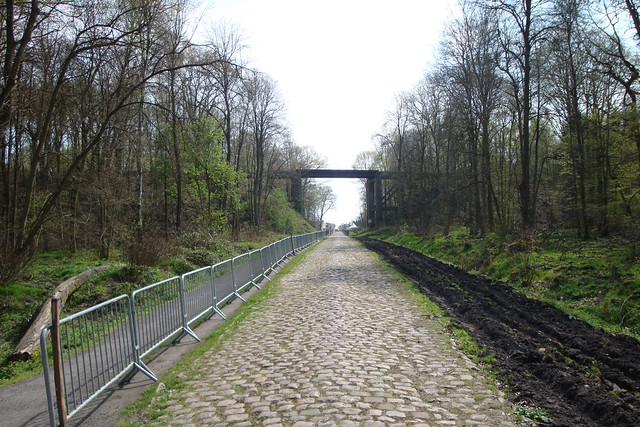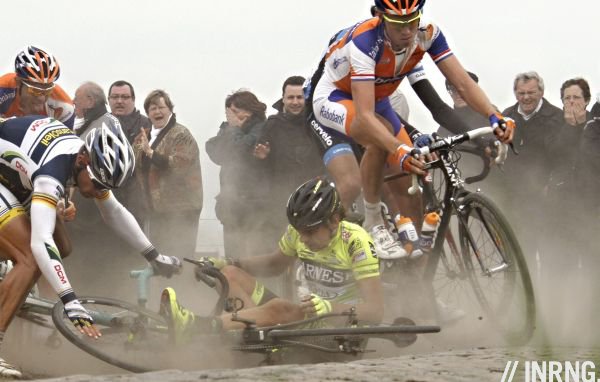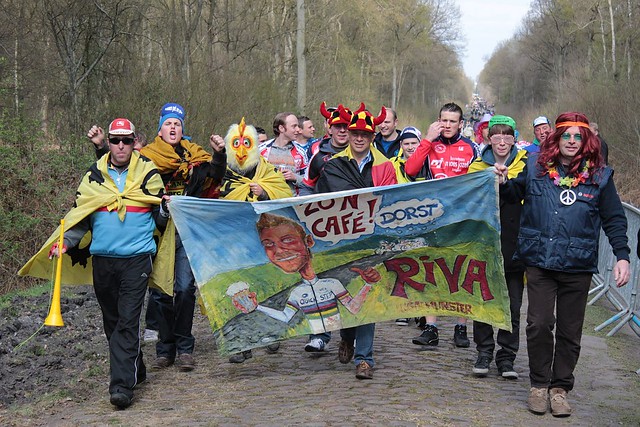 The Atacama desert. The Sahara. These are some of the driest spots on the planet. How about Roubaix in the north of France? It hasn’t rained there since 2002.
The Atacama desert. The Sahara. These are some of the driest spots on the planet. How about Roubaix in the north of France? It hasn’t rained there since 2002.
Roubaix
Highlights of 2013 – Part I
I’m going to pick five moments from 2013. They are a personal choice. With any list you often omit more than you include but I’ll explain each moment. They’re presented in no particular order.
When The Dust Settles
We spot the winner with ease. Watching a chain of events it’s possible to use hindsight and construct a narrative to explain how the race was won. But away from the podium there are many private battles. As the leaders charge though a cobbled section they kick up a dust cloud that leaves others choking and masks a lot of the action.
One way to measure the status of a race is to look at the attention given to the last placed finisher. The greater the race, the greater the triumph of the victor but also for those who finish. There is the lanterne rouge label in the Tour de France and in the Giro once had the maglia nera, a black jersey. But these are grand tours and Paris-Roubaix is special amongst the one day races because there are many stories from those who struggled to reach the finish.
The Moment The Race Was Won: Paris-Roubaix
Paris Roubaix is a race. It’s good to remember this because everyone had Fabian Cancellara as their favourite before the race and after the race everyone saw him holding the winner’s trophy. If you’d missed what happened in between it would possible to shrug and accept that the obvious result occurred, a victory for logic as much as for Cancellara.
Only the 254km race was so good that the result wasn’t known until the final three seconds when Cancellara came out of Sep Vanmarcke’s slipstream on final straight of the Roubaix velodrome to pass the Belgian and lift his arms in celebration. This was the moment the race was won.
The Spin: Paris-Roubaix Preview
The Belgians might say the Tour of Flanders is the best race of the year. Italians could say Milan-Sanremo is the most beautiful. But the hardest race of the year? With labels like “hell”, “brutal”, “hardest of the hardest”, “queen of the classics”, Paris-Roubaix is the toughest race of the year.
There can be moments when it crosses from a race to a circus event thanks to the giant cobbles, the mud and repeated mechanic failures. But there is something beautiful in the contest and watching riders ride their luck. It’s also high entertainment on TV.
After exploring the tech, the geography and other features of the race and the region, finally it’s time for the race.
The Route | How hard are the cobbles? | The Contenders | How to Beat Cancellara |Weather | TV Viewing | Startlist | The Trophy | History
Roads to Ride: The Arenberg Forest
As the next part in a series exploring the famous roads of cycling, here is the Trouée d’Arenberg in France. The idea with this regular series is to discover the road and its place in the world, whether its part in cycling’s folklore or to explore what it is like on a normal day without a race.
Having covered climbs like Alpe d’Huez and and Mont Ventoux, now it’s time for a piece of flat road.
A fixture in Paris-Roubaix this is a legendary part of the race even if it comes too early to pick the winner. But this only confirms the cobbled sector’s status, it is venerated despite not being crucial to the race.
The Hardest Race, The Softest Ride
With their medieval cobbles the Tour of Flanders and Paris-Roubaix are the most extreme races on the calendar. Yet they’re the shop window for bikes destined to be used on the calmest of Sunday mornings.
The cycle trade has its annual trade shows around September with Eurobike and Interbike but as The Velocast argued recently April is another industry event with a sharp focus on bike technology. If Paris-Roubaix didn’t exist, the industry would have to invent it.
The Psychogeography of Paris-Roubaix
Psychogeography is a concept designed to let people explore places and view the land and environment differently. There are books on the subject but there no rules, it is up to you to link landscapes to what’s on your mind. For example view London via the famous “Tube” map of its metro system and the British capital becomes a collection of lines and stops rather than streets and buildings.
Cycling does the same to parts of Europe. Belgium has crosswinds, as if no matter the wind is always perpendicular. Can you name a famous col in the Spanish Pyrenees? Probably not because for cyclists the Pyrenees are French despite the mountain range being shared by both countries.
Paris-Roubaix is one of the best examples of a race whose myth redefines the landscape, imposes artificial names on places and even manages to turn a crumbling shower block into an sporting Elysium reserved for an elite.
Roubaix: The Road To Hell and Back
This post isn’t so much about cycling but the wider area around this Sunday’s Paris-Roubaix race. As you’ll see below, the race’s “Hell of the North” title doesn’t come from cobbles but the state of the region.
Apologies if I upset the locals but Roubaix and the surrounding places are grim. Tourist rarely visit and the French share negative myths about the area. Today the region thrives as transport hub but it is rarely a final destination.
What’s so bad? The effects of wars past are still visible, from cratered landscapes to fields of white crosses marking mass graveyards. More recently the whole region has struggled with vanishing jobs and entrenched social problems. It’s a tough place with the toughest race.
Why do riders puncture so often?

A rider punctures in a race. They’re forced to stop and to stand by the side of the road, often holding up a wheel in the air with a forlorn look on their face. You’ve probably seen it on TV many times, maybe you’ve experienced it too.
Hopefully the rider will get a spare wheel and return to the action. But precious energy is wasted and when the pace is high the rider can lose time and placings. Look to Sylvain Chavanel in Paris-Roubaix last Sunday. One minute he’s at the front of the race, the next minute he’s out of contention. It happens so many times a year it seems normal. But is it? Would you work with a tool that let you down so often? If a rim or a crank failed this often nobody would use it.
An outsider to the sport would probably be amazed by the number of punctures that happen in a race. The energy wasted, the races lost, these incidents aren’t a mere inconvenience or hassle. Punctures cost results and points. At times even careers and reputations can be ruined. Why?






